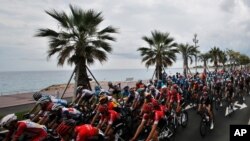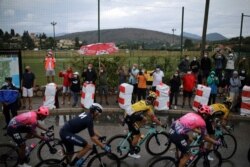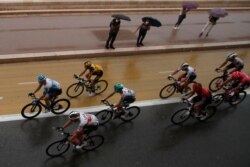The legendary Tour de France began Saturday, two months later than usual, and a day after France recorded its sharpest single-day coronavirus caseload since late March.
The crowds, usually packing the start of the Tour de France, are absent this year. Just 100 spectators were allowed for the early afternoon kickoff at the Promenade des Anglais in Nice —where masks are now required for all outdoor spaces.
That’s just a taste of how the virus this year is upending the 3,500-kilometer race, which crosses mountains, vineyards and villages of France. Team riders will be tested regularly for COVID-19 — and wear masks when not competing.
The big question is whether the Tour will end as planned three weeks from now at the Champs Elyees in Paris, or be forced to cut off early.
There are other reasons why the world's greatest bike race is very different this year.
Sixty-nine-year-old Francois Juillard, former head coach for the French track and field team, remembers following the Tour when he was young. The caravan came first, then the riders—who made difficult climbs seem easy. He says it was pretty spectacular.
That festive atmosphere — with candies showered at kids and tens of thousands of fans lining the roads — will be largely absent when the Tour passes Juillard's home in central France. National coronavirus measures limit crowds to no more than 5,000.
And with the French back at work, Juillard says, the Tour will be a lot more virtual — experienced by many fans via TV instead of in real life.
Eric Bouvat, longtime doctor for Tour team AG2R La Mondiale, says it’s unclear how that will affect the race. Part of the exceptional performances of Tour riders comes from the stimulation from those cheering crowds, he says, and it’s unclear whether they’ll find other ways to compensate.
So, like many other things during this time of the corornavirus, the 107th Tour de France will break new ground — possibly marking the beginning, and not the end, of a new normal.









